| Year-round Resident | |
| Has Nested in Park |
The American Robin is one of the best known birds in the United States. People who know little about birds usually can identify a robin. Robins are found in every state except Hawaii, and some people believe it should be our national bird. In some parts of the country, robins are considered harbingers of spring, but a significant number stay all year in the Washington metro area. During the spring, the year-round residents mingle with the robins who migrate into the Washington Area from the south.
Where to See Them in the Park
You can see American Robins in any part of the park. A lot of them are seen near the dog exercise area. They frequently go into the stream to bathe and drink.
Physical Description
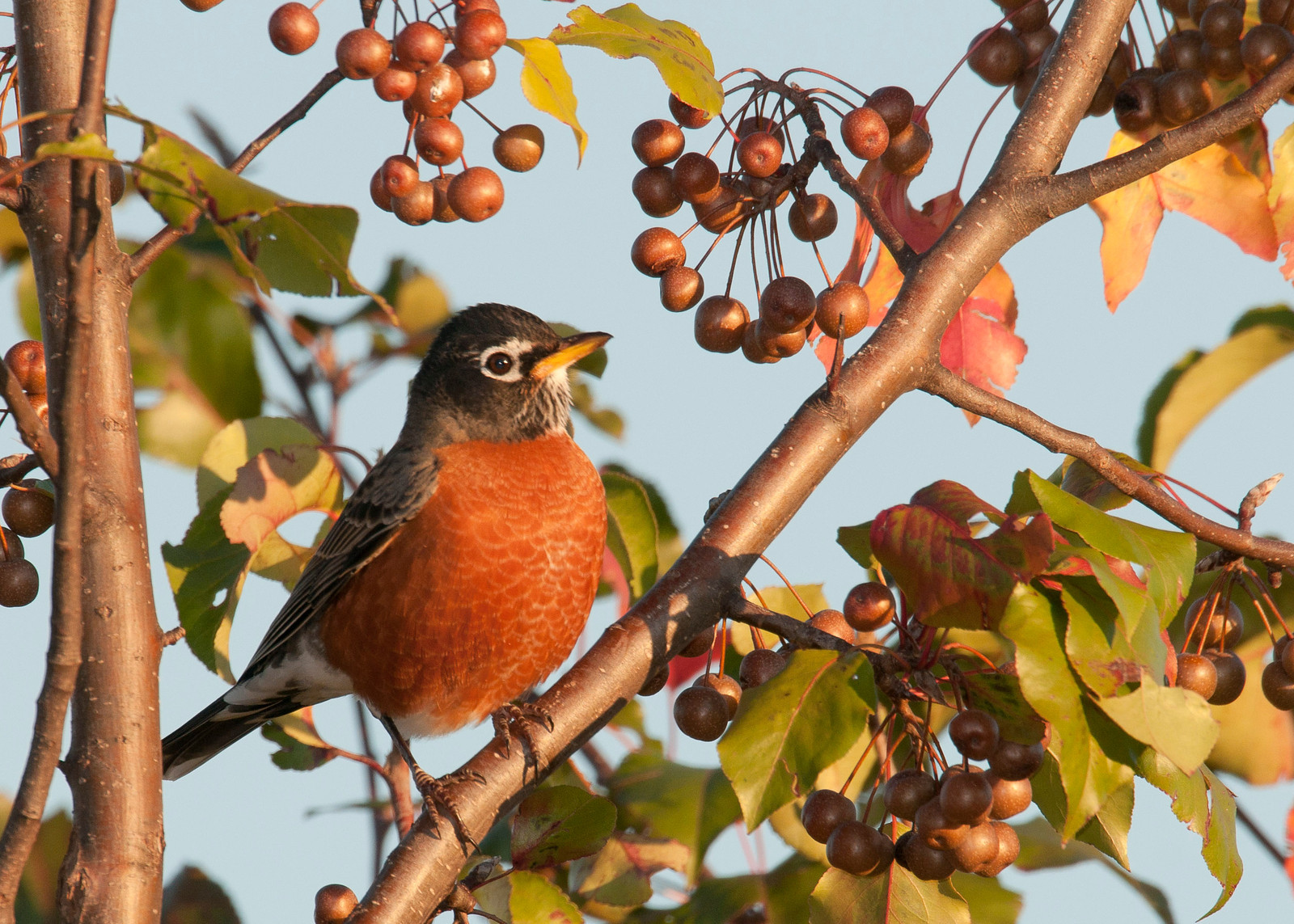
Adult robin plumage does not vary between the spring and fall. The male robin has a black head, a yellow bill, a gray back, and a reddish-brown breast.
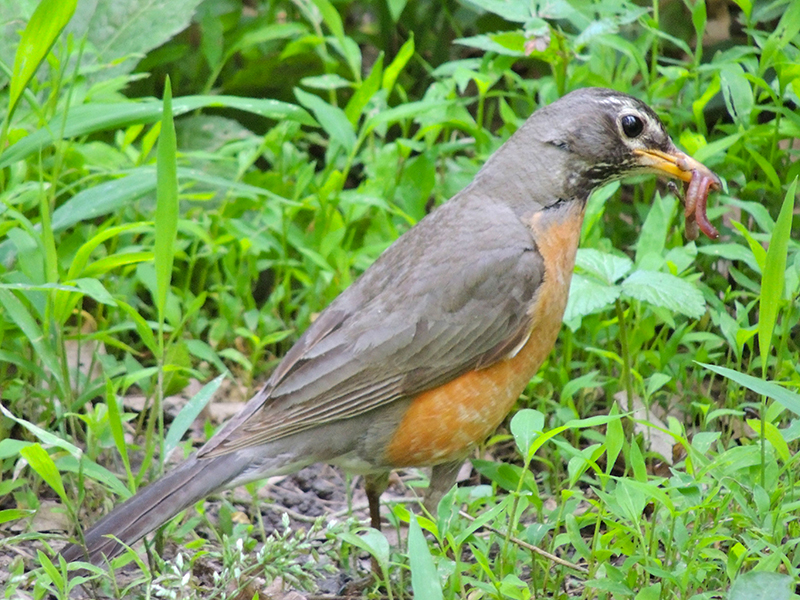
Female robins have a gray head rather than a black one. Females are paler and do not have as much contrast between the head feathers and the feathers on the nape and back; some females have little or no contrast. Robins are known for eating worms, but they have a much more varied diet. During the winter, flocks of robins often will descend upon a bush or tree and gorge on berries.
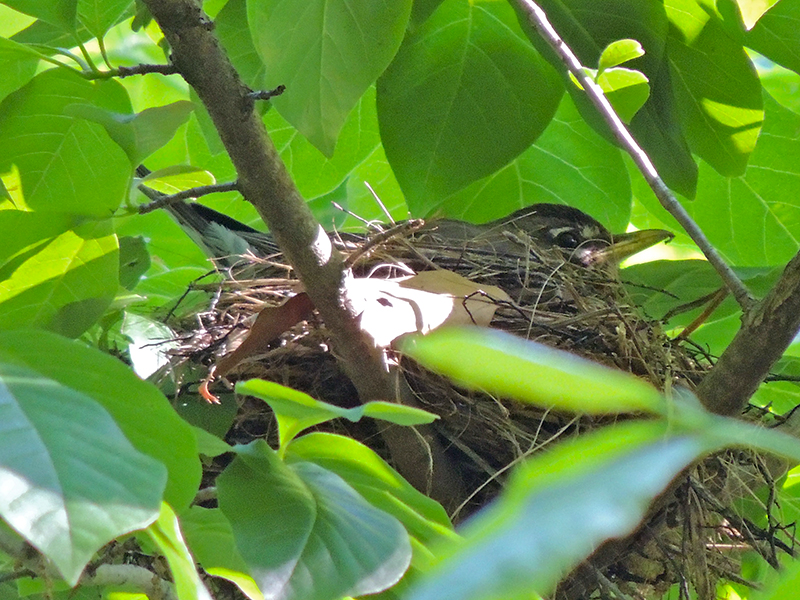
During the spring, there sometimes are multiple active robin nests at Monticello Park. Robins are one of the earliest birds to nest. A nest takes 2 to 6 days to build and is usually started a couple of weeks before the first egg is laid. Robins usually lay 3 to 4 blue eggs. Incubation lasts 12 to 14 days and is done only by the female. The hatchlings stay in the nest close to two weeks and are fed by both parents. When they leave the nest, the fledgling period lasts about four weeks. Robins can raise 2 to 3 broods per year.
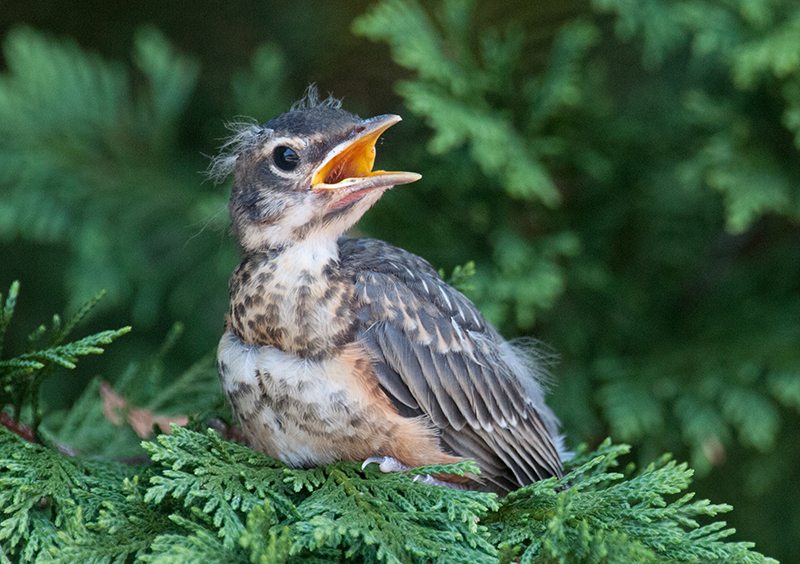
Juvenile American Robins have brown spots on their breast. You can see some who still have tufts of natal down.
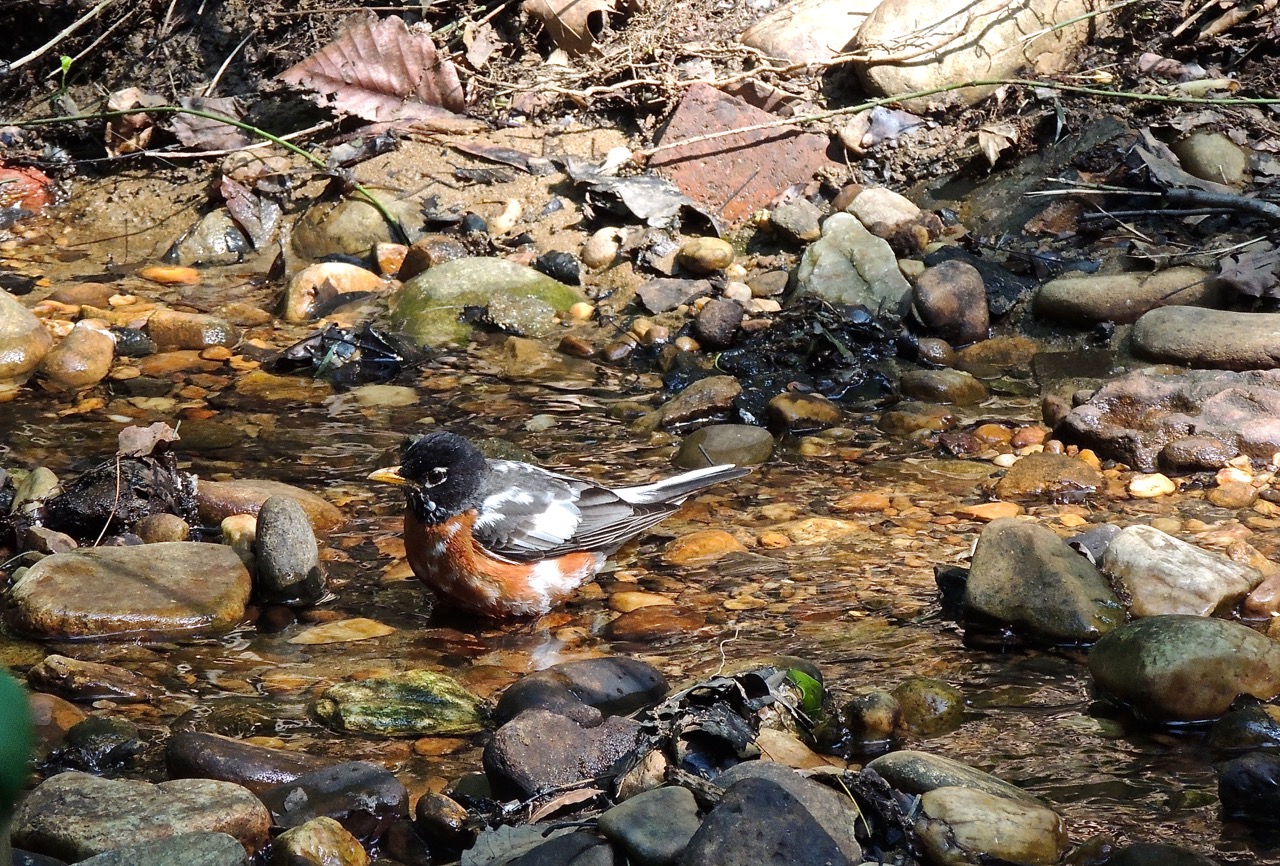
In 2018, a leucistic male American Robin visited Monticello Park. Leucism is a color abnormality which causes a loss of pigmentation, resulting in either some or all feathers being either white or pale. The robin had white patches of feathers on much of his body and tail. This video shows the leucistic robin bathing in the stream.
Vocalizations
The familiar song of the robin is a perky cheery-cheerily-cheeryup. The song is part of the typical soundtrack on a spring day at Monticello. Robins have multiple calls, including one that sounds like a sputtery tut-tut-tut-tut.
Hear the vocalizations of the American Robin.
Notes
Monticello Park does not have many Brown-headed Cowbirds, who can be a problem for nesting species. Cowbirds lay their eggs in the nests of other species, hoping that surrogate parents will raise the baby cowbirds. Some species are better at detecting the presence of cowbird eggs than others. Yellow Warblers will sometimes build a new nest on top of an old one in which a cowbird has deposited an egg. Here is a video of a robin removing a cowbird egg from her nest.
Origin of Names
Common Names: American to distinguish it from the unrelated European Robin. Robin is a diminutive of Robert. The European Robin also has a red breast, but it is in a different family.
Genus Name: Turdus is Latin for thrush and does not mean what you think it means.
Species Name: Migratorius means wanderer.
American Robin video footage
Return to the Index
